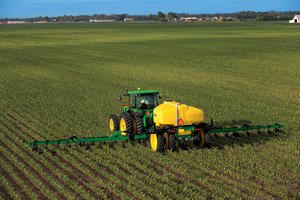According to a recent press release highlighting IBISWorld research findings, the precision agriculture systems and services industry is expected to experience significant growth over the next five years as farmers and producers look for ways to increase efficiency.
The industry is projected to grow at an annualized rate of 5.3% over the next five years, up to $1.5 billion by 2019. IBISWorld Industry Analyst Antal Neville, believes there is a driving force behind the expected growth of precision agriculture, stating in the press release, “Due to increasing demand from crop farmers who have pushed to maximize crop output to meet growing global demand, industry growth has been strong over the five-year period.” However, growth in 2014 is expected to be at just 1.8%, as lower demand for grain and oilseeds reduce farm income in the U.S.
The release indicates that demand from agribusiness, government assistance and technological change are the main drivers of precision agriculture revenue. The 2014 Farm Bill expanded support for small and beginning farmers with access to investment capital, which is expected to continue to support available funds they have for tools like precision agriculture. Additionally, 2012 U.S. Agriculture Census data shows farms with Internet access rose from 56.5 percent in 2007 to 69.6 percent in 2012, opening the door for increased precision agriculture adoption.
As the world’s population continues to expand and demand for crops increases, farmers in the United States and across the world will likely turn to precision agriculture technologies in the near future. The IBISWorld research findings show adoption of these technologies in the United States will grow at an impressive rate throughout the next five years.
